HUMAN HEADS, HANDS AND MUMMIES - Philippi Mummies A $1 "Tourist Trap", Free Viewing On The Herald
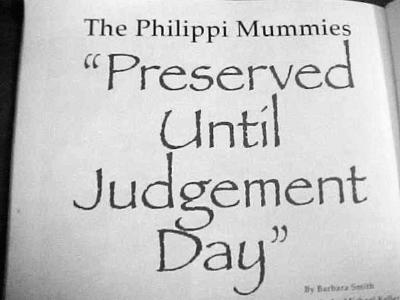
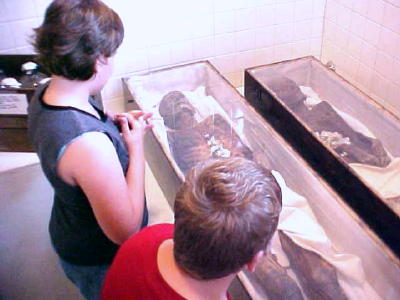
By Bob Weaver 2003
The mummies have been a topic of discussion around Philippi, West Virginia for 125 years. For $1 you can visit a tiny room in the Barbour County Historical Museum, a few feet from the historic covered bridge, and stare upon their leathery remains.
We stopped by last week, after our first visit about 35 years ago.
The two women, both unclaimed corpses from the old Weston Hospital for the Insane, were brought to Barbour County in 1888 by part-time undertaker and storekeeper Graham Hamrick.
In recent years the mummies have been scientifically examined by the Smithsonian, who did a story on how they died, along with National Geographic TV and numerous other magazines.
The asylum released the bodies of the women, an infant and a human hand to Hamrick for experimentation. The hand was stolen from a Philippi street fair in 1950 and taken to Canada, but the thief was caught and the hand was returned.
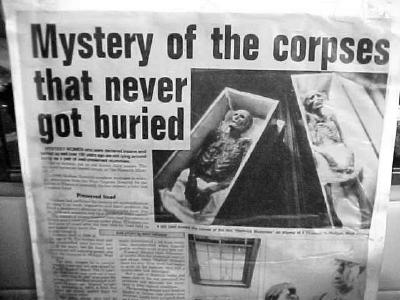
The mummies, after being on a world tour with a carnival, returned to Philippi to be stored in a barn, displayed at the county fair and other special occasions.
The great flood of 1985 covered the mummies with water, and destroyed the remains of the infant.
Hamrick worked for years in perfecting his solution, which he also used to preserve meat and vegetables. He was granted a patent on the formula and it was marketed by the Hamrick Embalming and Mummifying Fluid Company.
A 1913 ad, which listed several testimonials, said "It is the simplest and most efficient substance known to the scientific world for embalming."
When Hamrick died in 1899 at the age of 78, he left behind large bottles of mummified snakes, meat, small animals, fish, birds, corn and human body parts.
He carefully protected his method of preservation, but a complete description is on record with the U. S. Patent Office.
About 1900 a newspaper clipping reports that Hamrick had in his possession "the head of a negro man which was kept under a large inverted glass jar."
The article said it had been severed for nearly ten years "and the head could scarcely be told from that of a living person who had fallen asleep."
In 1963, Jim Comstock, editor of the West Virginia Hillbilly, took the mummies to Richwood and placed them on display. Comstock tried to get the State of West Virginia to purchase the mummies, but they declined.
Before Hamrick died he prepared enough solution to preserve his own body, but family members ignored his request and he was buried in a local cemetery.
The Hur Herald is nominating the Philippi Mummies to the list of cheap West Virginia tourist attractions, second only to the Mystery Hole at Hawk's Nest.
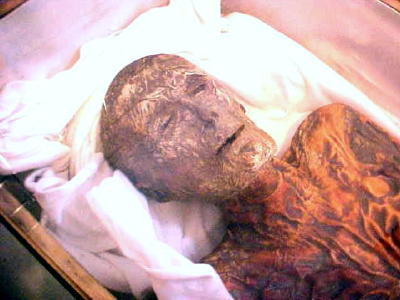
Hamrick said people will be staring upon
their faces hundreds of years from
now
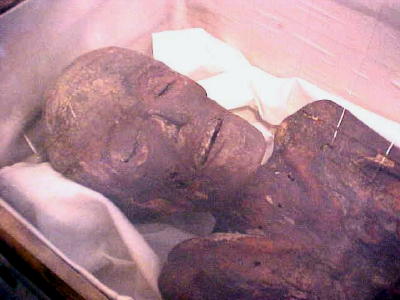
Hamrick said "The lost art of the Egyptians has been re-discovered"